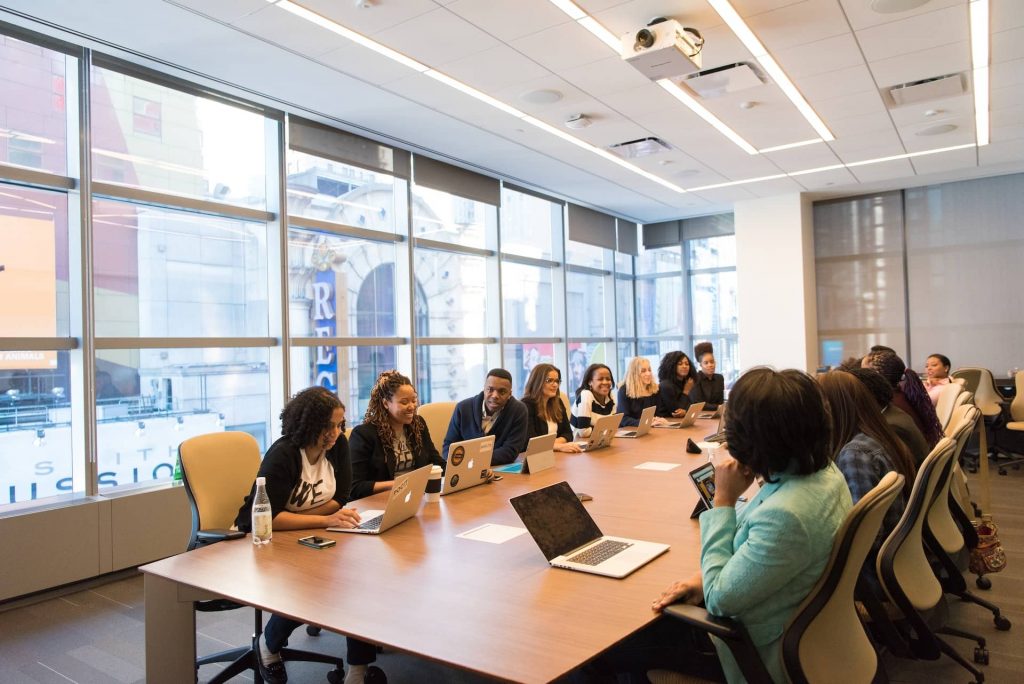What is workplace mobbing?
Workplace mobbing, or workplace harassment, refers to all the hostile and bullying behavior against a co-worker. These types of actions negatively affect a person’s mental health and integrity.
According to a survey conducted in 2021 by The Workplace Bullying Institute 48 million people have experienced workplace mobbing. Sadly, mobbing is an upward trend, the reason? Psychological abuse still remains a taboo issue, in and out of a company. This makes mobbing a very hard-to-catch target, and when you get to detect it, sometimes it’s too late to do something about it. laboral sigue siendo un tema tabú dentro y fuera de la empresa. Un tema difícil de detectar y que, en ocasiones, cuando se detecta es demasiado tarde para tomar una decisión acertada.
This is why, regardless of the lack of relevant information there is about workplace mobbing, HR professionals, as well as employees, must make an effort to get to know the facts and consequences that lead to mobbing. It will help to prevent and/or know how to react in case mobbing takes place.

Which types of mobbing at work can we find?
First of all, before focusing on the mobbing types we can find in a company, it is important to understand the difference between workplace discrimination and workplace mobbing.
- Workplace discrimination: involves being treated differently or unfairly due to gender, age, race, or other characteristics of a person. These types of hostile behavior affect someone’s physical and cultural integrity.
- Workplace mobbing or harassment: refers to constant bullying behavior that affects the organizational climate and an employee, creating an intimidating, hostile and threatening environment.
Workplace harassment or horizontal mobbing
Horizontal workplace mobbing is harassment that takes place between peers. In other words, between members of the same or different team, but with the same position rank.
Workplace harassment or vertical mobbing
Vertical workplace mobbing takes place between manager and employee or vice versa. In this case, it could happen that the victim ends up being a co-worker on a superior or inferior level. In this type of mobbing you can identify:
- Descending strategic vertical mobbing: on which the manager threatens the employee, who ends up being the victim of harassment, leading to their voluntary resignation.
- Descending disciplinary vertical mobbing: in this case, the manager has a hostile attitude towards the harassment victim, to impose discipline on other company employees.
Workplace harassment or “wicked” mobbing
Besides the two most common workplace mobbing types, there’s a third one known as “wicked” mobbing, in which the harasser acts without apparent reason. Here, more than an actual type of mobbing at the workplace, it would be about a negative personality attribute of a co-worker, manager, or c-level member.
This type of harassment is harder to detect, as it is part of the person and their way of behaving. This is why it is key to ensure cultural fit during the selection process, asking the right questions to identify these personality traits.
Causes for mobbing in the workplace
Mobbing in the workplace starts with the human touch established among the employees of a company. To ensure employee experience enhancement and a good organizational climate, it’s key to know the causes that may lead to workplace mobbing:
Objectives, tasks, and expectations
Sometimes, workplace mobbing victims are demanded to fulfill tasks that require a lot of concentration and effort. The cherry on top: they must hand them in a short period of time. This prevents them from achieving results as expected.
On the other hand, it is also possible to detect that mobbing is occurring when the victim is assigned fewer responsibilities that they can handle. It can also happen that some tasks are removed, and other routine jobs, with no purpose and even boring, are assigned. This can cause in the victim feelings of inability, frustration and discrimination in their work environment. This situation will probably end in a hostile relationship between the victim and the other company employees.
The team and their colleagues at work
Following what we just mentioned, if an employee doesn’t feel challenged by their objectives, it can lead to comparing themselves with other teammates. Doing this could end up in work frustration and create trouble among the team.
Eventually, there won’t be team harmony, and the employee won’t feel as if they belong to the team. As a consequence, that team member would feel unwelcome and with no motivation to keep working in that environment.
Team leadership and management
There is no scientific evidence of a direct relationship between leadership styles and harassment perception. Nevertheless, it is important for every manager to identify the most appropriate leadership style to reach the team’s and each member’s objectives. If this isn’t explained, employees may feel harassed regarding their professional development.
Another situation that may end up in conflict, could be if the employee doesn’t accept the challenges, tasks, or responsibilities set by their direct manager. It can trigger a constant dispute between both sides, which eventually leads to workplace mobbing.

How to detect harassment at work: The 4 phases of mobbing
Hostile behavior for a long period of time, may affect the victims’ mental health. It can cause mood disorders, stress and anxiety, which can even lead to depression and/or psychosomatic disorders.
Constant humiliation makes the person feel in a sustained inferior position, which will result in undermining their self-esteem. In order to preserve a good employee experience, learning how to detect these behaviors in a company is of great importance.
During a workplace mobbing period, it is possible to identify different repetitive stages. The four phases of workplace harassment or mobbing are:
- The conflict
- The harassment
- The company intervention
- Exclusion
Phase 1: The conflict
It is completely normal for different types of conflict to emerge in any company. These conflicts could be:
- Reasons due to workflow organization: as confrontations based on the company objectives and day-to-day routine.
- Personal issues: each employee has their own behavior and way of expressing themself, which may end up harming relationships.
In this first phase of the conflict, it is usual to speak with both involved sides, in order to clarify the situation, and take appropriate actions. If it is about a specific conflict, it should end with this mediation. If it is about a prolonged conflict, it could lead to the second phase: mobbing.
Phase 2: Workplace mobbing
In this phase, harassment at the workplace is considered a fact. The harasser runs a series of hostile behaviors towards the victim or victims, as was mentioned before.
It is very important to differentiate and take into account that there are a lot of situations that might happen in the workplace which shouldn’t be a threat. They could even be usual in a company. A good example is when a manager requests a task repeatedly, to be handled right away, without asking the employee for their opinion. It is key to be able to differentiate these situations, and of course, they can’t turn into harassment instruments. In other words, they can’t end up being a usual team dynamic.
When we find ourselves in front of workplace mobbing, it is very likely to observe malpractice. Usually, during this phase, there is the need to enhance communication and improve performance. Nowadays, this practice is completely discouraged because experience has shown that it doesn’t offer the best results. The mobbing phase has become chronic and repeated harassment.

Phase 3: Company intervention
In this phase, either HR or management must take a decision regarding the workplace mobbing situation, making a deep analysis of the harassment.
Probably, the victim wouldn’t notice what is happening. It is even possible for them to deny the evidence or the active collaboration of the rest of the team. In this phase, a good practice is:
- Define the roles: of the people involved in the conflict, such as the victim and harasser.
2. Speak with both sides: in order to expose the situation, individually and altogether. Try to reach an understanding.
3. Switch job position: if after the different conversations the conflict still persists, it is advised to request a change of job position, usually to the harasser.
4. Dismissal: If the workplace mobbing keeps going through, the final solution would be the harasser’s dismissal.
Phase 4: Exclusion
When all of the other phases fail, it is normal that the victim wants to leave their job position, to put the harassment to an end. Usually, this phase has no way back. This is why it is so important to learn beforehand how to prevent workplace mobbing, to avoid reaching burnout, a dead end.
How to prevent mobbing at the workplace
HR should be the one ensuring that mobbing and these types of bullying behavior don’t emerge in a company. Also, raising awareness among the entire company on how employees can avoid and act before workplace mobbing.
It is of vital importance to implement preventive measures in the workplace, as well as an action protocol against mobbing. We advice:
- Prepare behavior and code of conduct guides: with the objective of introducing what is workplace mobbing to every employee. Consequences for the victim and the company should be included and highlighted as well.
- Define values, behaviors and routines: in order to show employees a code of conduct. It will help maintain a good organizational climate and a positive company culture.
- Set an ethical code: the company posture against every type of hostile conduct, such as workplace mobbing, is clearly shown.
- Create an action protocol: in which, if any type of workplace harassment takes place, it must include the people in charge of mediation and sanctions for the harasser. Some examples of possible sanctions are salarying retention, justified dismissal, position switch, etc.
- Use digital tools: this will help measure the organizational climate that the team is breathing in. For example, Nailted gives a vision of employee satisfaction, motivation, as well as the teams’ engagement, all in real time.
- Internal awareness campaigns: use on and offline communication channels. For example, send through the internal newsletter information about workplace mobbing and its consequences to the victim.
- Create and define the mediator figure: if it is the case of a small company where there is no HR department, or there aren’t enough resources, it would be necessary to create the mediator figure, as a neutral side of the conflict. The mediator should try to negotiate different options for both sides, the victim and the harasser, looking to end the conflict and maintain a good company climate.

Furthermore, following the 2030 agenda of The Sustainable Development Goals, companies must comply with objective 11. “Make cities inclusive, safe, resilient and sustainable.”
This is why, when it comes to workplace harassment prevention, professionals in people and culture must create inclusive, fair, resilient and sustainable workspaces. HR must analyze every aspect of the situation, in order to clarify it, as well as look after all employees’ wellness and mental health.
How can the company get involved in preventing mobbing in the workplace
The role of the company, HR professionals, and every employee is key in front of all those workplace mobbing situations that may emerge. Their involvement will maintain a good organizational climate, not an easy task, especially on occasions where it is hard to identify if we are talking about a harassment situation.
Due to this and other motives, it is important to use employee engagement tools. They will help us know employee satisfaction levels and identify conflicts, toxic behaviors, or situations that are very hard to catch at first look. This will let you act as fast as you can, and will help you avoid the development of any type of issue into a major conflict. Extremely useful for workplace mobbing detection and prevention initiatives.
If you want to catch conflicts at your company with just a glance and prevent workplace mobbing from becoming a reality, reach out to one of our People & Culture experts. We will be thrilled to show you how Nailted can not only give you a vision of the company climate but also help you enhance the employee experience for your entire team.










